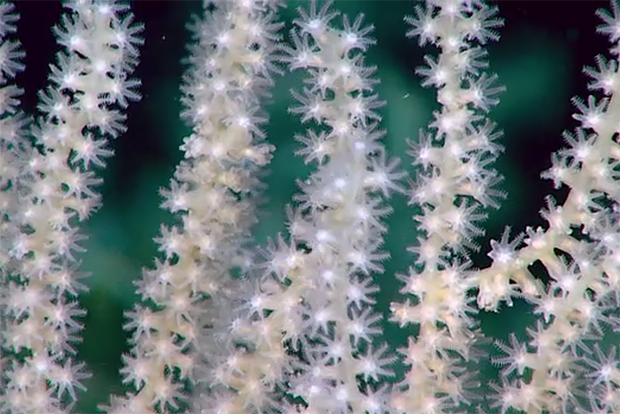Multi-partner mapping effort reveals largest known deep-sea coral reef habitat

Corals of the Blake Plateau. Credit: NOAA
Large cold-water coral mounds were first documented offshore of the southeastern U.S. in the 1960s. Since that time, extensive research has been conducted by regional experts to discover new mounds throughout the Blake Plateau and to document the ecological importance of these habitats. Fisheries managers have used this information to protect known coral areas from physical damage. The recently completed mapping effort in the region builds on this foundational work by revealing the full extent and characteristics of these important deep-sea coral mound features.
"This strategic multiyear and multi-agency effort to systematically map and characterize the stunning coral ecosystem right on the doorstep of the U.S. East Coast is a perfect example of what we can accomplish when we pool resources and focus on exploring the approximately 50% of U.S. marine waters that are still unmapped," says Derek Sowers, Ph.D., Mapping Operations Manager for the Ocean Exploration Trust and lead author of the study. "Approximately 75% of the global ocean is still unmapped in any kind of detail, but many organizations are working to change that. This study provides a methodology aimed at interpreting mapping data over large ocean regions for insights into seafloor habitats and advancing standardized approaches to classifying them to support ecosystem-based management and conservation efforts."